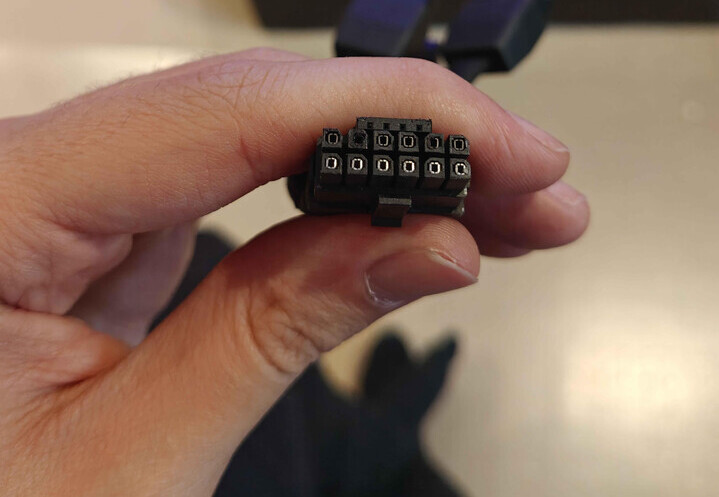It appears as though AMD has also fallen prey to the melting 12VHPWR connector issues that plagued the NVIDIA RTX 4000 and 5000-series cards. Although very few AMD graphics card makers used the 12VHPWR connector for the Radeon RX 7000 series, adoption rates f…
Why it matters
- The melting 12VHPWR connector issue has now affected AMD, raising concerns for users of the Radeon RX 7000 series.
- This incident follows similar problems experienced by NVIDIA's RTX 4000 and 5000 series graphics cards, indicating a potential design flaw in high-wattage connectors.
- The reliability of power connectors is crucial for gaming performance and hardware longevity, impacting consumer trust and industry standards.
In a troubling development for gamers and hardware enthusiasts, AMD appears to be the latest victim of the notorious melting 12VHPWR connector problem that has already plagued NVIDIA’s RTX 4000 and 5000 series graphics cards. Reports indicate that the Radeon RX 7000 series is experiencing similar issues, although the implementation of the 12VHPWR connector has been limited among AMD graphics card manufacturers.
The 12VHPWR connector, designed to deliver substantial power to high-performance graphics cards, has raised significant concerns since its introduction. This issue was first highlighted with NVIDIA’s graphics cards, where users reported overheating and melting connectors leading to hardware failures. With AMD now facing similar challenges, the industry is witnessing a troubling pattern that could have far-reaching implications for consumer confidence.
While AMD's RX 7000 series has not widely adopted the 12VHPWR connector, the few manufacturers that have integrated it are now contending with these issues. This raises alarms for both users and industry experts alike, questioning the reliability of these connectors in high-performance applications. As more cases surface, the potential for damage to graphics cards increases, leaving consumers wary of the choices they make.
The first confirmed incident involving an AMD RX 9070 XT graphics card indicates that the melting connector problem is not exclusive to NVIDIA. This situation underscores the need for manufacturers to thoroughly vet their designs and materials, particularly in components that handle significant power loads. However, only a handful of card makers opted for the 12VHPWR connector in the Radeon RX 7000 series, which means that the immediate impact may be somewhat contained -
As the gaming community remains vigilant, the incident raises broader questions about quality control and product safety across the industry. Users who invest substantial sums into high-end graphics cards expect not only performance but also durability and reliability. The advent of melting connectors challenges these expectations, potentially leading to a backlash against manufacturers who fail to address these issues promptly.
The consequences of such failures extend beyond individual card users. Retailers and manufacturers alike may find themselves facing increased warranty claims, returns, and negative reviews, all of which can tarnish reputations built over years. Furthermore, the trust that gamers place in these brands is crucial, as many rely on their hardware to support not just gaming but also content creation, streaming, and professional applications.
In light of these developments, AMD users are advised to monitor their graphics cards closely and consider alternatives if they notice any unusual heat or performance issues. Forums and community discussions are already buzzing with users sharing their experiences and potential solutions. It remains to be seen how AMD will respond to this problem and whether they will issue recalls, replacements, or other remedies for affected consumers.
As the situation unfolds, both AMD and NVIDIA must grapple with the implications of these connector failures. The industry may need to reassess the design and specifications of power connectors to prevent similar occurrences in the future. For gamers and PC builders, this serves as a reminder of the importance of thorough research and consideration before investing in high-performance components.
Ultimately, the melting 12VHPWR connector issue highlights the fragility of trust in the tech market, where one mishap can ripple through consumer perceptions and sales. As AMD navigates these challenges, the eyes of the gaming community will be keenly focused on their next steps and the measures they take to ensure that such problems do not arise again.











